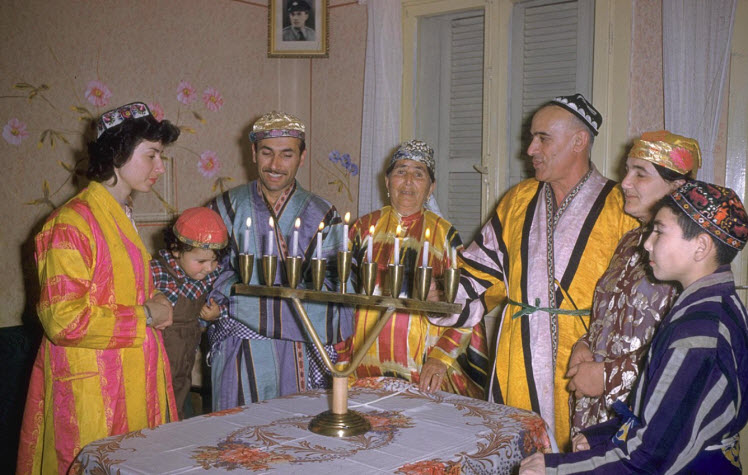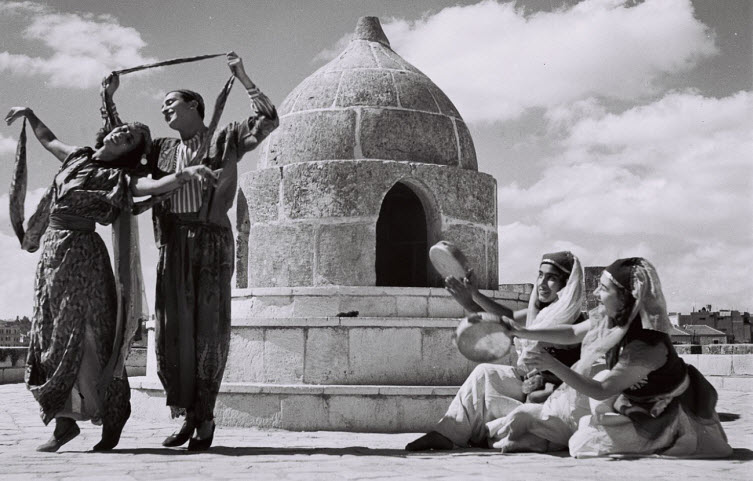
“We didn’t learn about the broader region where I’m from in Jewish day school,” said the Tashkent native. “I didn’t hear about it in the media, nor in my Jewish studies or Near Eastern studies classes at the University of Washington.”
BY ELIANA RUDEE
Experts in global Jewish history believe that highlighting minority voices within the Jewish community has the power to honor its nuances and interconnectedness. JNS’s new series highlighting Jewish ethnic minorities aims to elevate their voices, and in turn, celebrate the beautiful mosaic that is the Jewish people.
Ruben Shimonov was born in the Uzbek capital city of Tashkent and moved to the United States following the collapse of the Soviet Union when he was just 6 years old. His early memories as an asylum seeker, immigrant and Soviet Jew, he says, have largely shaped his “life, identity, sensibilities, social justice and his core sense of self”—continuing to do so, in ways that are both “traumatic” and “inspiring.”
Shimonov’s identity as an immigrant “runs deep,” he told JNS, and allows him “to connect with other refugees, asylees and immigrants.”
The Bukharian family sought refuge in Seattle, escaping the Soviet anti-Semitism “that had been institutionalized for decades,” while the majority of Bukharian Jews moved to Queens, N.Y., affectionately nicknamed “Queensistan.”
Shimonov grew up among a vibrant Sephardi community of Jews originally from Spain, Turkey and Greece. Though many criticize Jewish America’s “ashkenormativity”—a word that describes how the experience of European Jews has become the “normative” Jewish experience in the United States—Shimonov explained that the Sephardi community “also didn’t reflect my experience.”
“We didn’t learn about the broader region where I’m from in Jewish day school,” he explained. “I didn’t hear about it in the media, nor in my Jewish studies or Near Eastern studies classes at the University of Washington.”

Shimonov’s background and identity, he says, not only wasn’t discussed but was “seen as not real.” And after the attacks of Sept. 11, 2001, he said, “I stopped telling people where I’m from and began to internalize this lack of representation and lack of knowledge in both non-Jewish and Jewish circles, wondering if my story even matters—if it was meant to be a footnote, at best, in a book.”
“Asking the question, ‘Do we fit into the American Jewish narrative?’ can feel lonely and disempowering,” he recalled.
This kind of thinking, Shimonov later determined, results in missed opportunities to build connections with both non-Jews as well as other Jews.
“I recently got into a cab with a driver from Afghanistan, who didn’t realize there were Jews there,” he said. “Lifting up Mizrahim allows us to create robust and authentic connections, and bridges with Muslim brothers and sisters.”
“My Judaism took root and flourished in Islamic lands,” he continued. In his role as Hillel’s director of cross-community engagement and education at Queens College, he said, “Pakistani students would come over and say, ‘Oh my God, we have that food, and those sounds [of Mizrahi music] are like what we hear in the mosque.”
By connecting, he said, “We can spark broader discussions, learn from each other and build a more robust society.”
‘Part of an ancient community’
Shimonov began to ask himself “where my story fits into the American Jewish story,” initiating his own research and academic writing, “piecing together disparate and obscure sources into projects and papers, and eventually receiving scholarships and research grants from the University of Washington, which empowered me to understand that this was a story worth being told.”
As Uzbekistan is located between the Middle East, South Asia and Russia, Shimonov explained that his culture reflects multiple civilizations surrounding the area, sharing similarities with other Russian and Persian-speaking Jewish communities of central Asia who have also existed in the region since the Babylonian expulsion.
“This connects to two stories,” he related. “We are part of the broader story of Mizrahim who were dispersed in an abrupt and sudden way, and we are also part of Soviet Jewish exodus, including more than 1 million migrants.”
“I can appreciate the threads connecting us to a broader Mizrahi and Sephardi community rooted in the first expulsion—taking pride in being part of an ancient community that has by and large stayed in the same place for millennia, as other religions came and went,” he explained. “We share a sense of Mizrahi pride with Irani, Iraqi, Syrian and Yemenite Jews who were dispersed east of Israel.”
According to Shimonov, around 1,000 Jews remain in Uzbekistan after the mass migration of Central Asian Jews, which began in the late 1800s, though the majority of them moved following the collapse of the Soviet Union.
The Jewish people are a mosaic, described Shimonov, “all tiles of different sizes and colors” that together create a larger masterpiece. Regarding his work that uplifts a diverse range of minority voices, he said “we need both the particularities and achdut (‘unity’); it’s that balance. If I just empowered Bukharians, it would be incomplete.”

‘Celebrate ethnic cultural and racial diversity’
To empower a range of Jewish voices, Shimonov has worked in the Jewish nonprofit world as a community organizer, educator and social innovator, aiming to create spaces for Jewish student life on campus to “empower and validate, and affirm identities and experiences of a subsection of the Jewish community.”
Today, he is the American Sephardi Federation’s young leadership board vice president of education and community engagement, and organizes Shabbat gatherings that celebrate Jewish cultural diversity, including dinners and retreats for the LGBTQ Sephardic-Mizrahi community.
“People are hungry to learn—that enthusiasm is there,” he declared.
He said he is happy that the Jewish world is having more conversations about global diversity, inclusivity, pluralism, multiculturalism and the urgency of lifting up voices on the margins, although he believes it is long overdue. “Policy-makers and community-builders are finally engaging on issues of what it means to truly understand and celebrate ethnic cultural and racial diversity, rather than just ‘checking off’ a diversity box,” he said.
“When we lift up these stories that were on the sidelines, the fringes of our Jewish narrative, we are not only empowering these particular communities, but we are also doing an important service to the Jewish people,” he maintained. “When we celebrate Jewish diversity, and the eclectic and mosaic nature of our people, we all benefit from that. Narrow, myopic views of what Jewish identity is hurts even Ashkenazi Jews, as it strips away the rich tapestry that is our people.”
credit to jns.org













